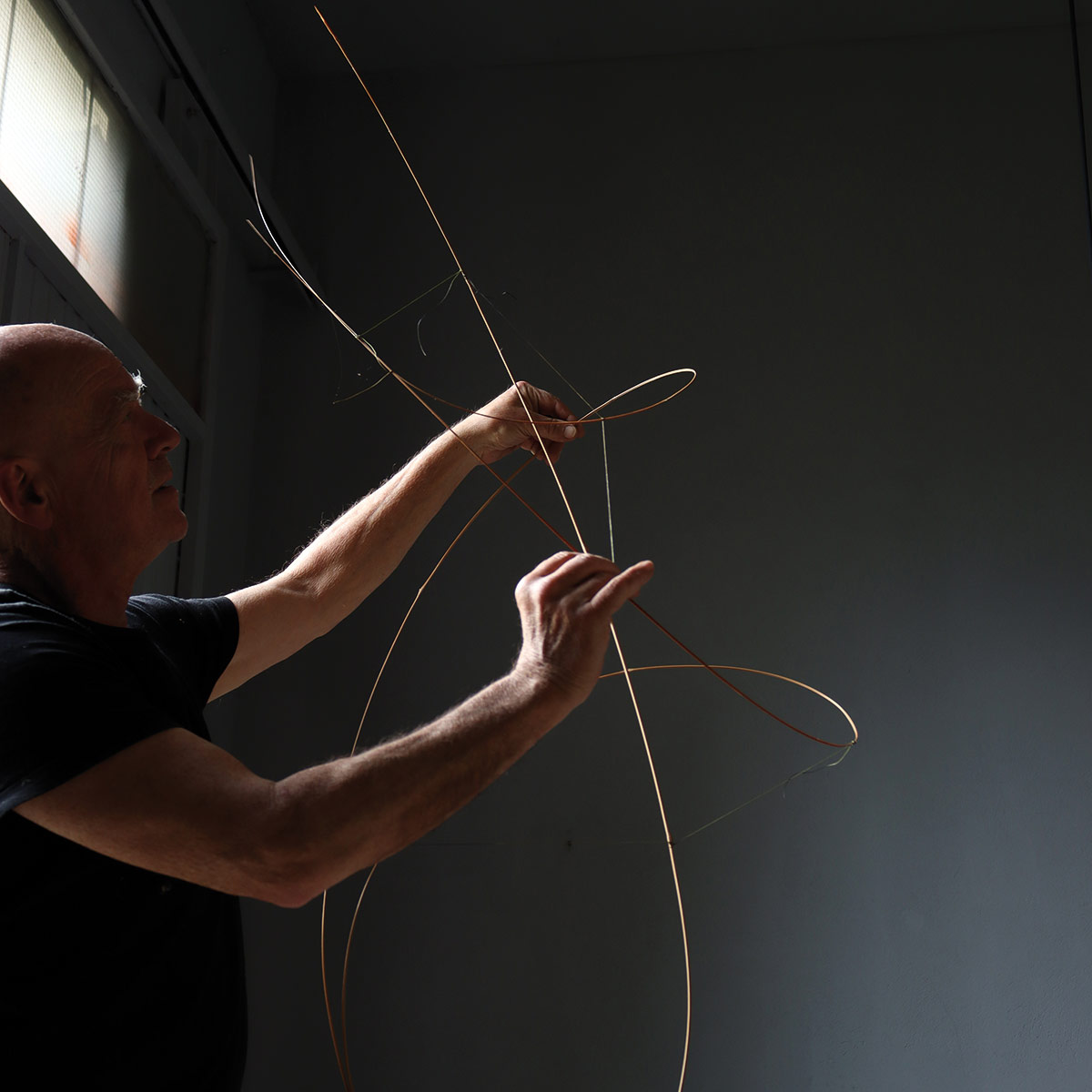Laurent Martin “Lo”
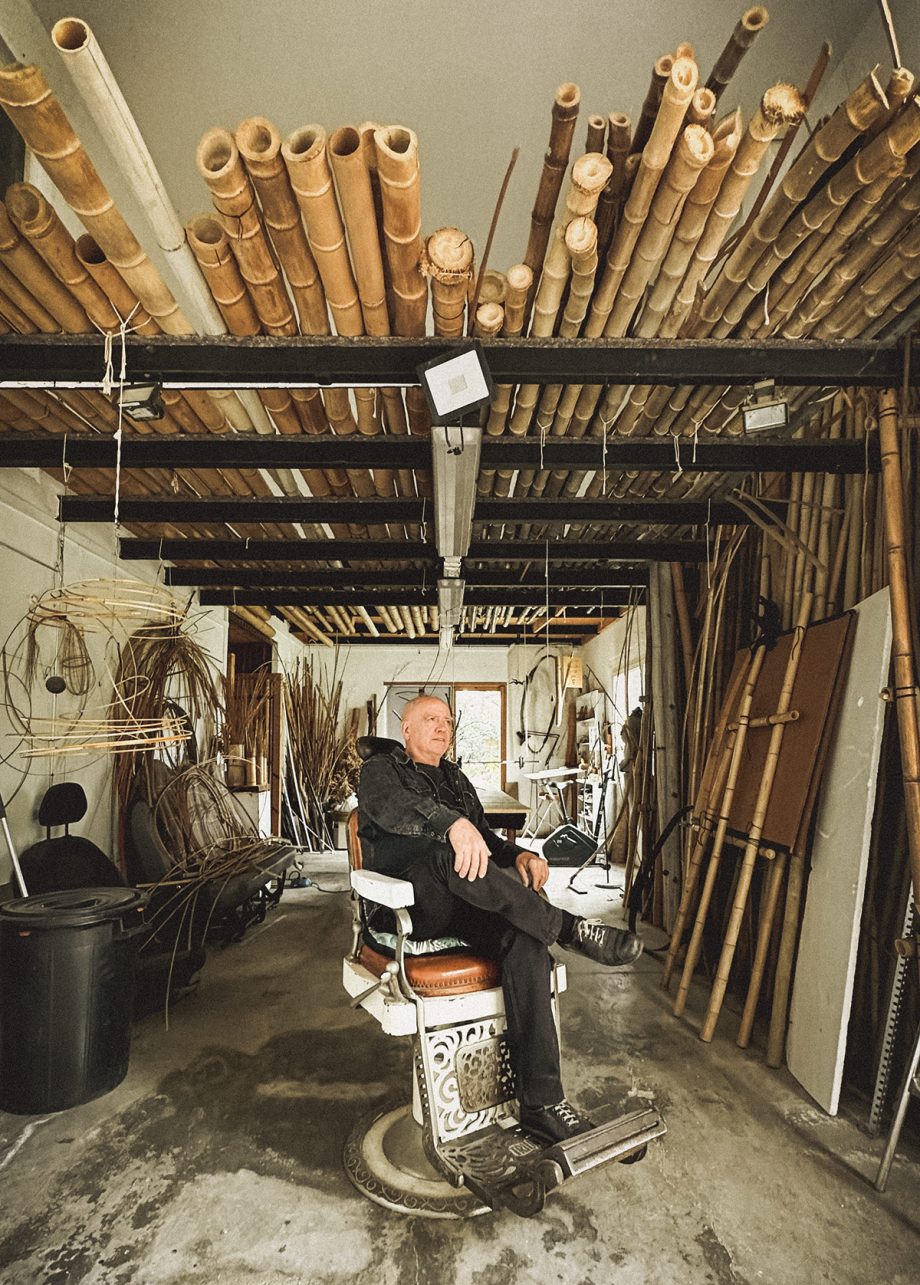
WHEN ART AND NATURE COME TOGETHER TO DRAW BALANCES OF SILENCES IN THE AIR. WORDS CARLOS ÁLVAREZ PHOTOGRAPHY MANOLO DA COSTA AND JUDIT BOU FOR ALZUETA GALLERY AND COURTESY OF THE ARTIST STARRING LAURENT MARTIN “LO” WWW.LAURENT-LO.COM
To have a sculpture by Laurent Martin “Lo” in front of you is visual poetry. The lines he draws in the air with bamboo are incredibly powerful and fragile. A balance that invites you to fly, to want to be inside that universe. After this talk with “Lo” you realise how rewarding it is to listen to the messages coming from inside of you. It is never too late to turn your life around and go in search of what seems to be just a dream. As William Shakespeare said, “A man who does not feed on his dreams grows old quickly”.
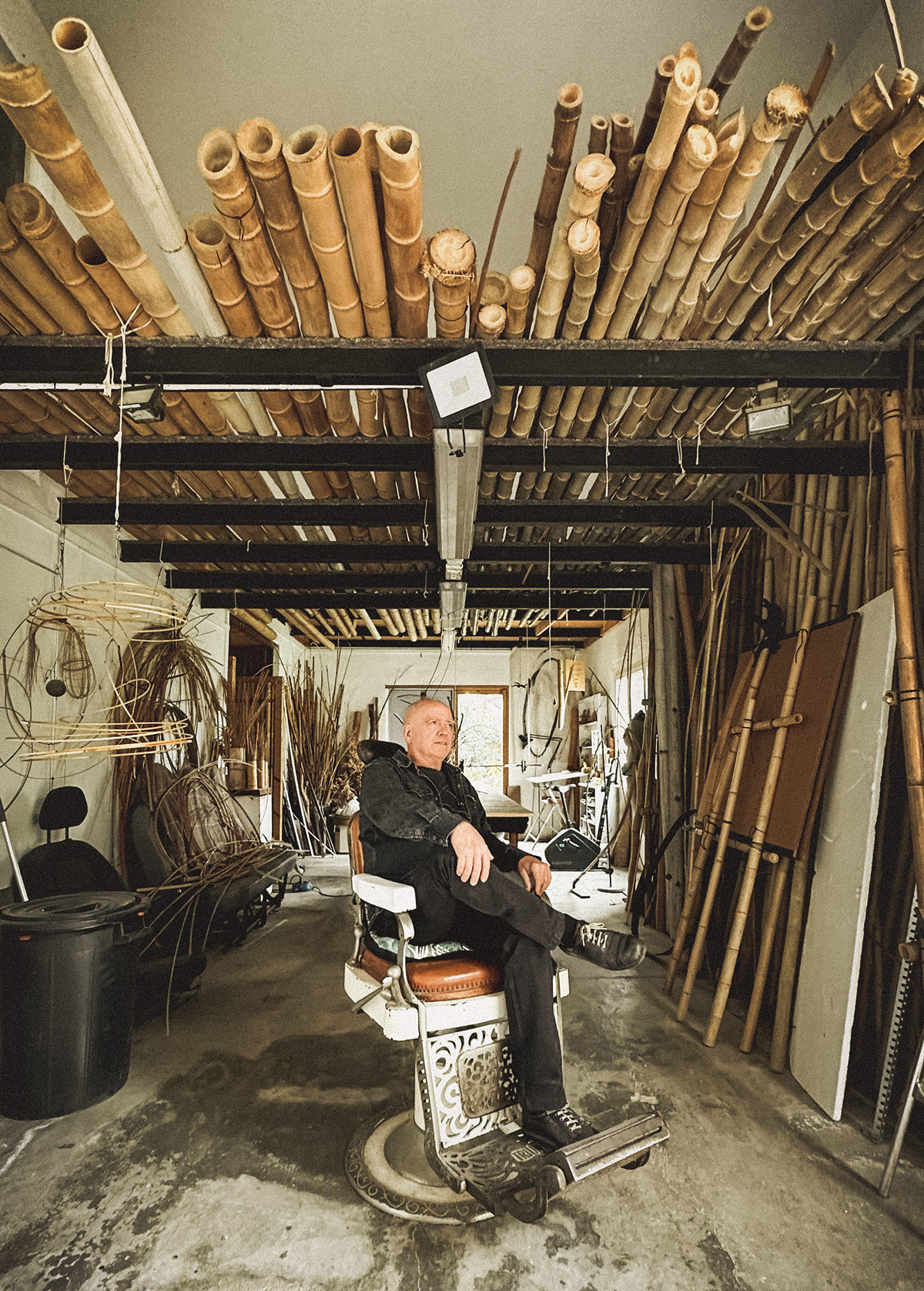
Tell us how bamboo came into your hands and became the main element of your work.
It’s a story that goes through different stages of my life. I used to work in the advertising industry for fashion companies as a creative director and art director. I worked a lot in the US and you know that in the US you tend to eat very badly. The only thing I ate when I was there was sushi and so on for four years, during which I also spent four months working between Miami and New York. In the mid-90s I settled in Barcelona. At that time there was no SushiBar in the city and with some partners, I had the idea of setting up the first SushiBar in Barcelona. It was called “Sushi & News”, and it had more of a London or New York concept, like a loft, where you could eat sushi, It wasn’t a classic Japanese restaurant.
On a visit to see my mother in France, I was with her in her garden, where she had a lot of bamboos, I told her about SushiBar and we quickly saw the connection between sushi, Japan and the bamboo in front of us. So I cut some and took it back to Barcelona. That is when bamboo came into my life. The SushiBar was an old factory, quite big, open plan and with just 3 columns, all made of exposed brick, it was very nice. I took the bamboo I had brought with me and started to visualise the central kitchen, typical of a SushiBar. I started to cut it and slit it to make the structure in real size and at that moment I fell in love, it was a crush. From then on, bamboo entered my life and it has been a constant evolution.
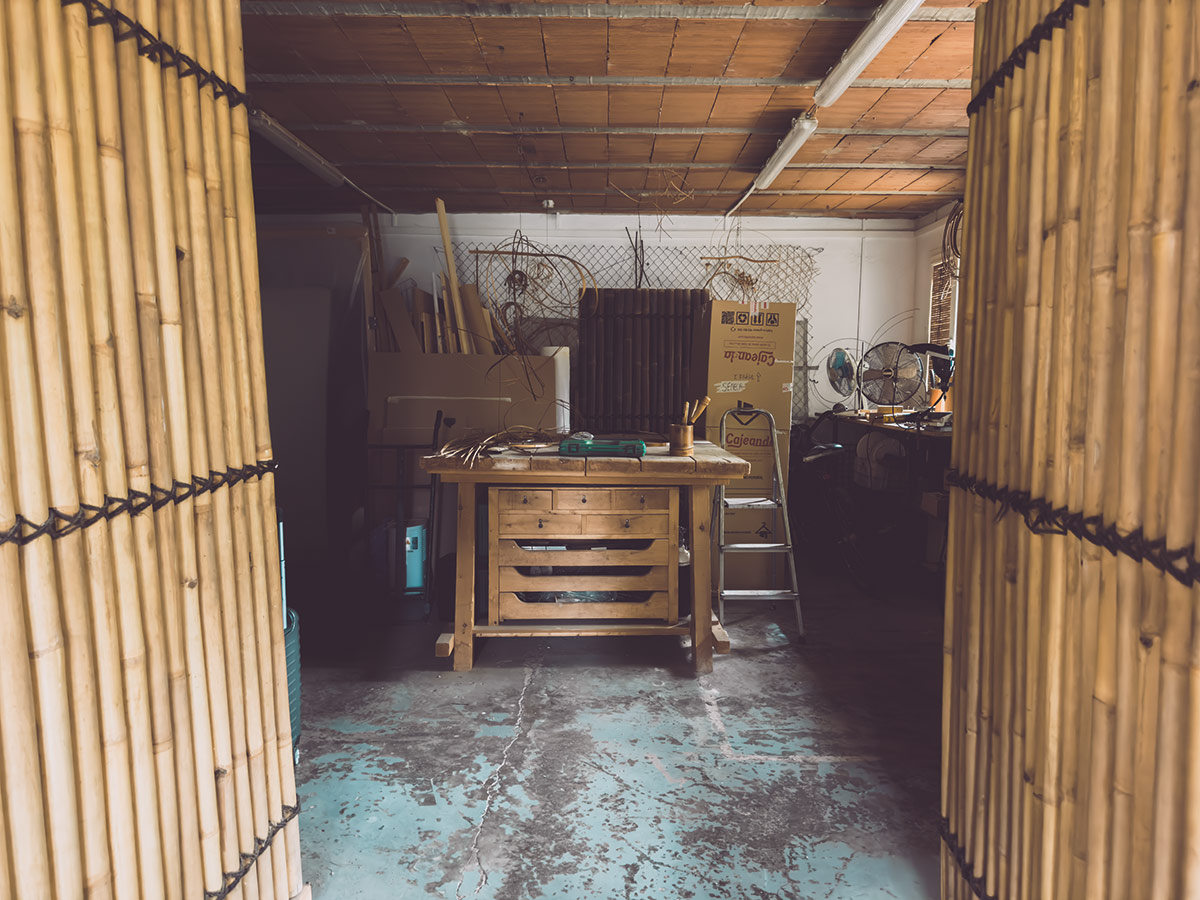
Did you switch from SushiBar to sculpture or had you already done sculpture before?
For a few years I was still doing things in advertising, working for big fashion brands, but I stopped as I had to spend many hours at the SushiBar. I used to get home at 1 a.m. and I started to do little things with the bamboo. After 5 years, I decided to break away from that life. I sold my flat where I lived in Plaza Real, I sold my share of the SushiBar, all to finance a new life. I had been experimenting with bamboo for a long time, but I needed to get to know bamboo better. It was a very strong feeling, and I decided to travel for a few months to India, Thailand, Laos, Vietnam… I went to lost areas in search of knowledge about bamboo, where there are tribes where 80% of their resources come from bamboo, living almost like hundreds of years ago, but wearing caps of some drinks brand or football shirts.
You could say that it was quite risky to leave everything and go on a trip in search of bamboo, when it seemed that you had achieved a stable life. What happened when you came back from that trip?
I didn’t know what to do, with the money I had left after paying off my mortgage… I had two years of “peace”, so I was waiting for something good to happen that I could earn my living with again. I had the good fortune that, before I left on my trip to Asia, a friend recommended that I go and see José Luis Pascual, a very versatile artist who had a gallery. We were in his office getting to know each other, I was carrying some sticks and, on his table, I showed him some examples of what I was doing. Jose Luis, who is a man of very few words, said to me, “next year, when you come back from your trip, I want to start the season with you in my gallery”.
That proposal changed everything, because I knew that after the trip, I had the possibility of exhibiting in the gallery. When I arrived, I settled in a small village near Garraf and I started to work all winter in my studio. After a few months, I called him to come and see my work. He really liked what he saw and suggested I do a solo show to present my work. I made 35 sculptures and it was a great success, all of them sold except five that, due to their construction, couldn’t be sold. That is when I decided to work seriously on this sculptural project with bamboo and thus find out what an artist’s life is, which is not as playful as appears to be.
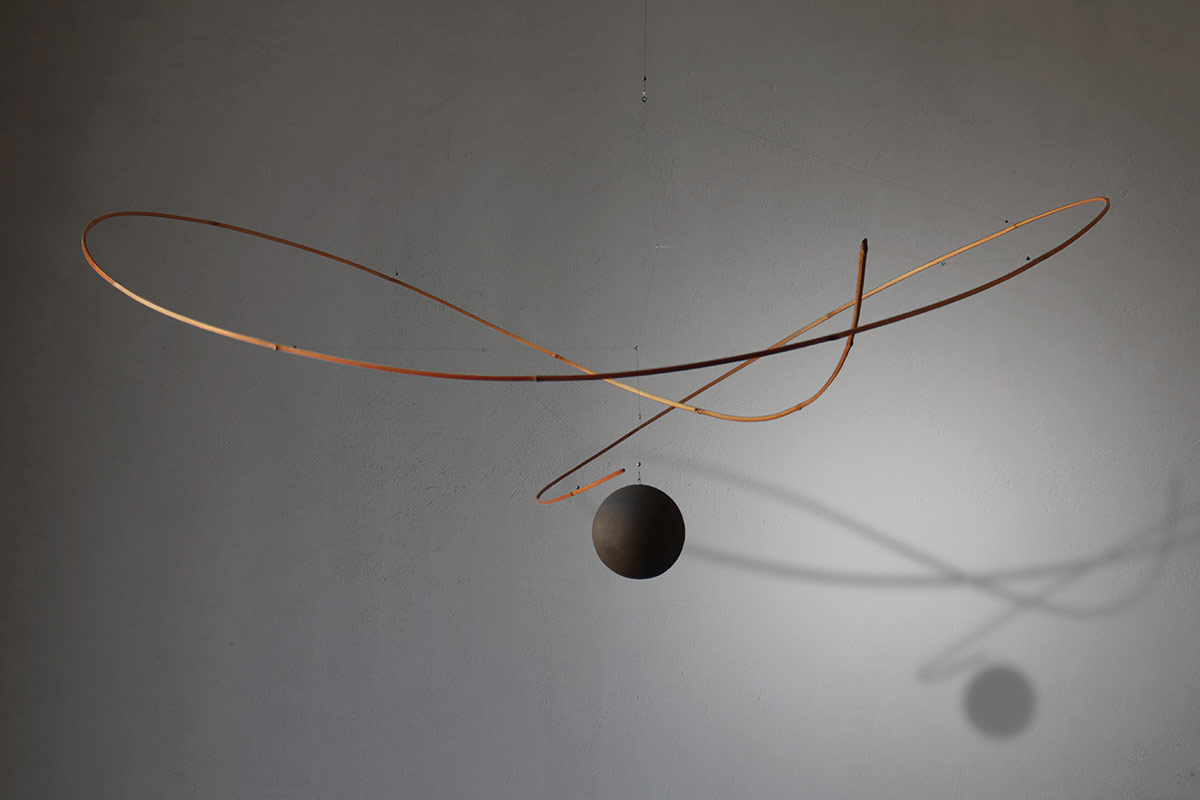
Can you tell us about your life as an artist?
Well, there are good times and not so good times. People always see the artist as a bohemian who dreams all day long and works when he feels like it. They can’t imagine what it takes to work and how hard it is. Picasso used to say “ The muse better catch you working”. It’s very easy to get demoralised, perseverance is essential and it’s not always easy to have it. And at the age of 50, which is when I decided to make this change in my life, well, you can imagine. But I’ve been lucky and since then I haven’t stopped. People have received my work well and that’s a good sign. I do many exhibitions, presentations of my work all over the world. All along the way I’ve had the good fortune to have a great manager, Mercedes Durban Montreal. Unfortunately, she died last year. She accompanied me wherever I went, she sorted my metro tickets when I went to Paris or booked everything in Hong Kong, she took care of all administrative matters and most importantly, she gave me recommendations on how to move in the art world, she knew a lot about the art market. It’s very complicated to know how to navigate it. I was lucky enough to work with her for 15 years and she accompanied and guided me.
Each of your works is like a poem, and with very little you reach very deep places. Tell us about your creative process, both with bamboo and the things that inspire you to make your pieces.
To work with bamboo is to work with balance, I always say that it is the plant of balance, both ecologically and in its mechanical, mathematical structure, it brings together a series of characteristics that are very impressive, such as flexibility, strength and, of course, nobility. I always work with bamboo, I rarely draw my pieces. I never plan the artistic result, it’s a direct dialogue with the bamboo, its capacity to bend and resist. When I build, I never look at the aesthetic, I build so that it supports itself, with spaces in balance, in harmonious movement.
They are very reminiscent of the natural universe, that’s why spheres are very present in my work, they are the centre of gravity. All the play of tension and containment that I build is to obtain the eternal balance between the bamboo and the sphere. Nature is a constant equilibrium for things to work. I work on balance and it is the bamboo that transmits this nobility, poetry or even music. It conveys all of that. It doesn’t come from me, it comes from the bamboo. I use it to build from the emptiness and it is when I take ten steps back and sit in my armchair that I see the harmony, the poetry… but all of that is generated by the bamboo, not by me.
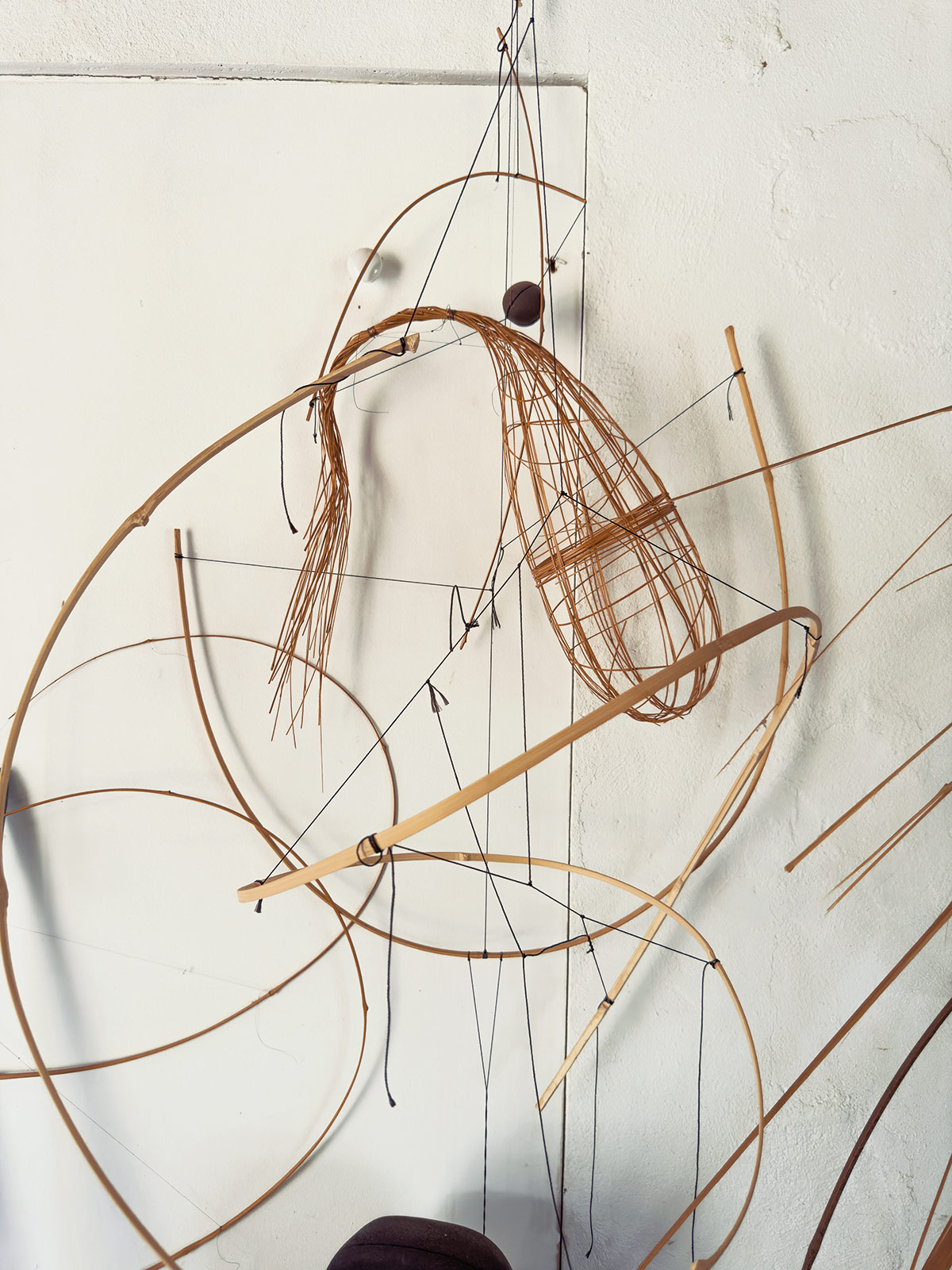
Can you tell us about bamboo and the challenges you face in working with it?
Bamboo has played a very important role in the history of mankind, especially in Asia, where they speak of “The Bamboo Civilisation”, just as in Europe we speak of “The Stone Age”. It was a key material for human evolution in tropical countries. People fished, hunted, built houses… all with bamboo. There are around 1,200 species in the world. They only take four months to reach their definitive size. They can grow up to a metre a day. I was working in Bali with bamboos, shaping them in their growth stage and every day I had to make changes, they were growing 50 cm a day. It was amazing! Bamboo has a circular structure. The outer side is the hardest and densest. As it grows, the knots get further apart. At the base it needs to be more rigid and so they are closer together, and at the top they are further apart, giving it flexibility. I use all of it in my work, so depending on what I need I use one part or another.
The fresher the bamboo, the easier it is to work with, but as you can see, here I have bamboo that is dry and I work with it anyway. A challenge might be the permanence of outdoor works. Bamboo is a vegetable fibre and it deteriorates, although much less than wood. I never recommend putting my work outside, because if you don’t take care of it, if you don’t oil it, it deteriorates over time. If you look at my work, it has very direct links with fishing and the materials used. When I was a child, I always watched my grandfather handling his bamboo rod, how he patiently untangled the fishing line, the weights, the knots… I use all of that technique in my work, it has a lot of my grandfather in it. He taught me a lot, how to follow the logic of the knot to untangle it, the sliding knots…. And it is fishing rods that led me to a solution for bamboo. Now they are made of carbon fibre, which is a very similar material in terms of flexibility and resistance. I am studying the use of this material for outdoor works.
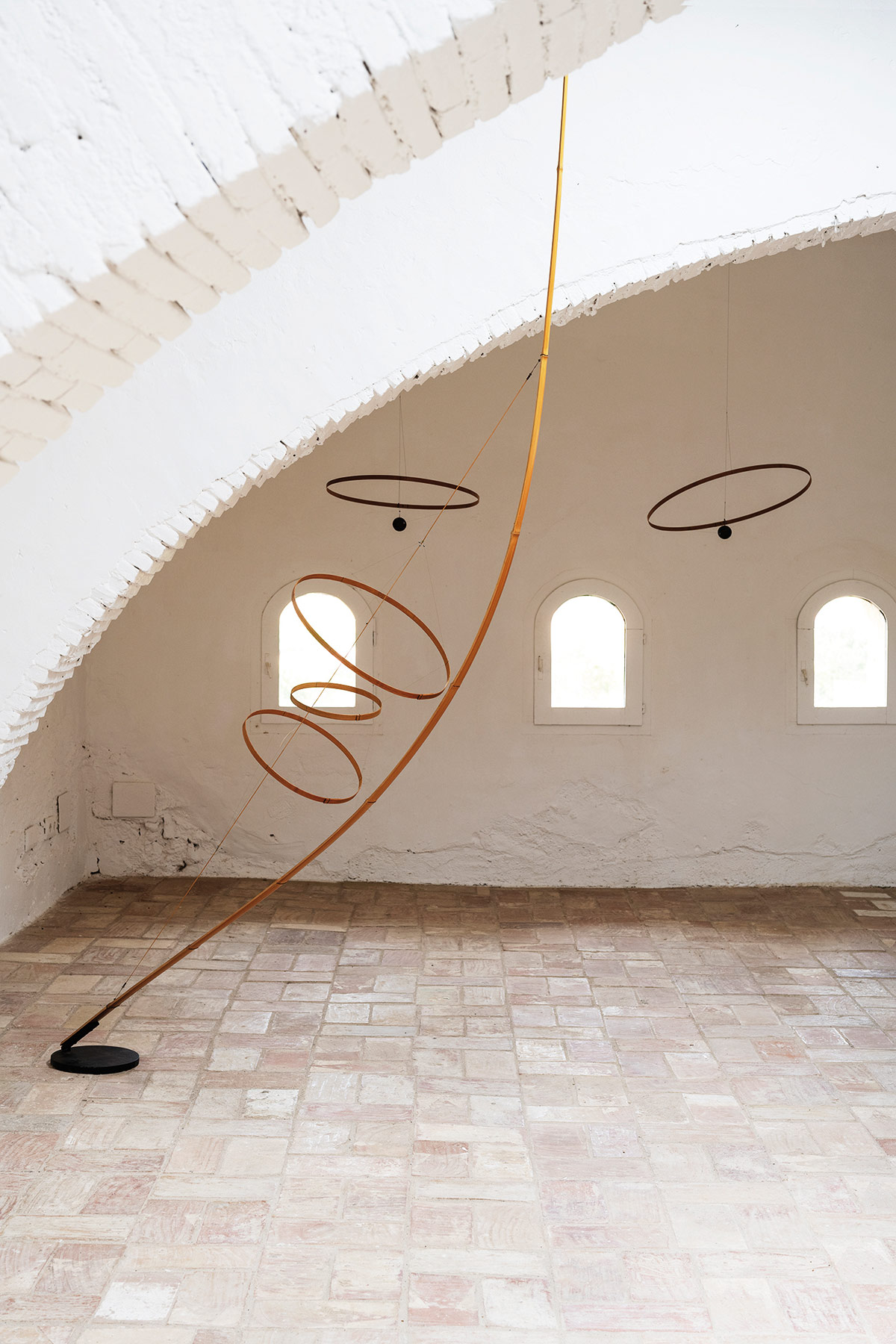
When it comes to working with bamboo, do you interfere with it a lot?
I work a lot with the time and the weather, because between the humidity, dryness, the Tramontana winds, the sea air… little by little the bamboo finds its place and I don’t intervene, only if I have forced it too much, but I generally respect its nature. The bamboo takes its harmonic forms. If you force it, it makes a bad shape, expressing that you are forcing it to do something you shouldn’t. That is one of the reasons why I never draw, you can’t draw balance, it’s impossible.
When I build a piece and at a certain point it starts to shake, that’s when it’s in the right place, because it doesn’t know where to go, that’s the magic. I don’t work from aesthetic considerations. I know that on its own it will just be. I like to say that I work improvising from knowledge, like in jazz, the basis would be the knowledge of the music and improvisation would be its beauty. They go beyond the clouds and then come back to reality. On a conceptual level my work is like that, but I need the technique and the knowledge of the material, because each bamboo is different, so I have to see what it allows me to do, not what I want to do.
How does the bamboo arrive at your studio: do you travel to exotic countries in search of bamboo or do you import it directly?
Almost 75% of the bamboo I work with comes from a public botanical park near Nîmes, “La bambouseraie d’Anduze”, which is wonderful and unique. It belonged to a great collector of exotic plants, Eugène Mazel, a passionate botanist. It is a park where 72 species of bamboo grow in real bamboo forests. It is unique in Europe. I have a very good relationship with the people who manage the park and I go there to cut a lot of the bamboo I use, like this black bamboo or these giant bamboos. And during the winter, I travel from time to time to tropical countries and spend three or four months working and sharing. On my last trip I was in Taiwan, where a bamboo merchant gave me a space to work. I was able to work with a bamboo that they smoke in a giant oven to make it more resistant to mould and insects, and now I have asked them to send me some so I can continue working with this bamboo. I love it.
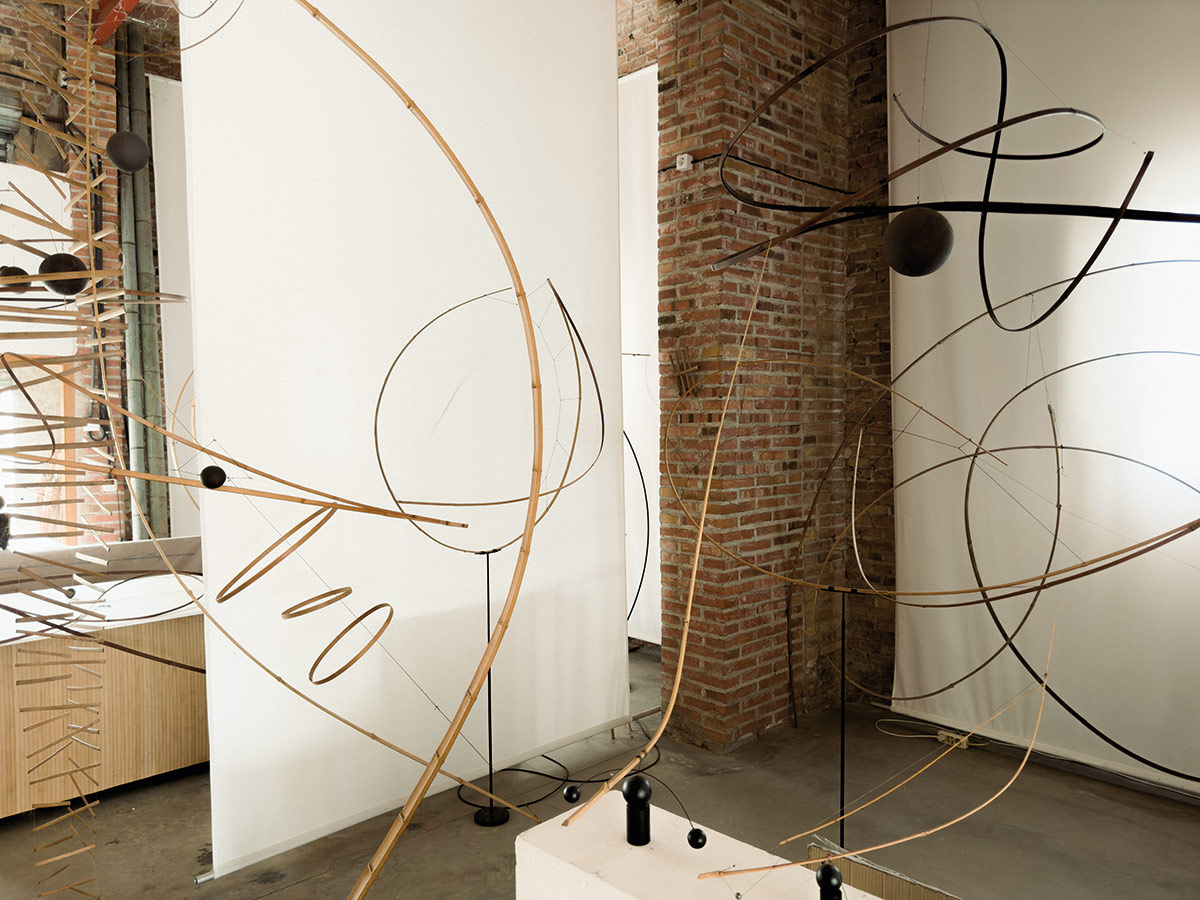
Do you have a dream you would like to make a reality?
Personal or artistic?
One that you would like to share with us.
Artistically, it is being ful- filled. I live from my work as an “artist”, in inverted com- mas, because I don’t spend so much time cultivating the fi- gure of an artist. But without leaving aside this dream, of sculpture, perhaps another dream I have will be fulfilled soon. And that is to return to painting, since my first con- tact with art was painting, some 40 years ago. But at that time what moved the art world and its “laws” disgusted me so much that I decided to give it up and focus on something else. It was an act of rebellion. Now I have this dream of re- turning to painting and seeing what happens. It’s a pending matter.
